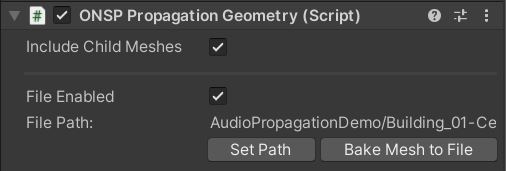VR Game Audio Design - Personal Project
- Umut Yelbaşı

- Dec 14, 2024
- 3 min read
PROJECT DETAILS
Date: December 2022
Location: Salford, England
Goals & aims
This individual assignment looks at the design and implementation of a virtual reality environment with audio, rendered using a variety of spatial audio methods within the Unity engine.
This provides familiarity with game audio design, sound effect production, acoustic propagation, and other key audio properties utilised during the project.
Sound Bed
I’ve used an ambisonic recording of a crowded airport as my sound bed. This is anchored near where the player spawns and stays there, while acting as a bed audio.
This audio is outputted through a specific Bed Audio mixer which is controlled in the main Audio Mixers tab.
The Spatial Blend is tuned to 3D so that it acts as the atmosphere sound.

Toggleable Objects
Some objects are assigned audio files that can be toggled on and off. These give the player something to interact with.
In Room 1, the toggleable object is the radio which plays a recording of Maple Leaf Rag when toggled on, as well as blinking a yellow light in sync with the sound.
In Room 2, the toggleable object is the electric saw which can be turned on and off by the player.
Both objects start in their “OFF” states.
The Radio Music Audio Mixer Group Controller has a total of four effects applied on it to create the final sound.
The highpass and lowpass filters create the classic radio sound from a clean recording of a piano.
The OculusSpatializerReflection add-on allows monophonic sound sources to be spatialized in 3D relative to the user’s head location. In addition, it can be used for audio propagation, which provides real-time reverb and occlusion simulation based on game geometry. This was used on the walls, ceiling, and the floor.
Interactable Objects
The scenes have interactable objects which the player can pick up with the controller. These objects have sounds that play when they hit somewhere like the walls or the floor.
Every object has two sounds that interchange randomly for variation.
The ONSP Audio Source script is deprecated and is replaced by VRC_SpatialAudioSource, however for the purposes of this project the legacy ONSP Audio Source script is used.
This script determines how the object’s sound reacts to changing distance.
The XR Grab Interactable script allows objects to be grabbable. It’s also what determines the features of the movement of objects it’s assigned to.
As seen below, the script determines the Velocity, Throw Smoothing, and other key properties.
Propagation
The Audio Propagation feature of the Oculus Audio Spatializer provides real-time reverb and occlusion simulation based on game geometry (i.e. the materials of the walls/ceiling/floor, the shape, the height, etc.). The system models both indoor and outdoor spaces, but it’s only used for indoors spaces for this project.
First step to get the propagation of a room boundary is to generate the ONSP propagation geometry through the script.
Once this geometry is generated, the ONSP Propagation Material script is applied to calculate the Absorption and Scattering properties of the materials on the frequency spectrum
Propagation creates the difference between rooms in terms of audio properties
Audio Difference Between Rooms
The two rooms have different sound characteristics and the objects from each room won’t be heard the same way in the other room.
To simulate this, two reverb/reflection zones have been created which encapsulate the two rooms (one for each room), and they were set up in a way to replicate the reverb/reflection properties of the types of rooms.
Room 1 is a hangar with concrete walls and metal objects and Room 2 is a living room with wooden floors and wooden/metal objects.

When the player is going between the two rooms, the sound qualities change depending on where the player is stood. This is achieved by the combination of mixer snapshots and the Reflection Zones.
Below are the mixer settings for Room 1 (hangar) and Room 2 (living room). As evident from the mixer snapshots, the Electric Saw, which is in Room 2, is louder in the Room 2 snapshot compared to Room 1.
































